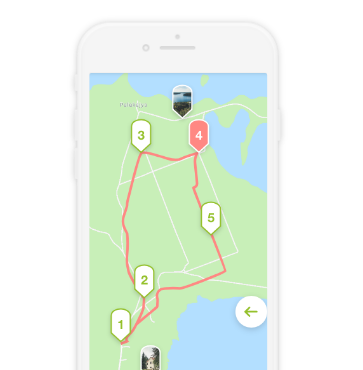Thousands of years ago, the retreating glacier left its traces in Kelmė District – deep river valleys, lakes, and gravel hills. In the vicinity of Tytuvėnai, visitors are attracted by the Stone Ridge Educational Trail, lakes Bridvaišis, Gilius, Apušis and Gauštvinis formed by glacial melt water. Relatively recently, a huge boulder – the Kriaučius Stone – was found in the village of Vileikiai in Pakražantis Eldership. This boulder is the third largest stone in Lithuania.
In Kelmė, stones were used for centuries for purely practical purposes: for paving streets, building dams and mills, foundations of buildings. In masonry buildings, stones were incorporated into the walls, thus helping to save a little on expensive bricks. Stone monuments were built in cemeteries.
The tradition of stonemasonry in Kelmė became popular thanks to Juozas Liaudanskis (1904–1989). He is one of the most popular and famous creators of Lithuanian folk stone sculpture.
Since 2004, the tradition of J. Liaudanskis to decorate Kelmė Town with sculptures has been continued for years – every second year the symposiums of stonemasons are held. The works created during these symposiums remain in Kelmė and decorate the town public spaces. The Art Gallery of Kelmė Cultural Centre opened in the year 2016 was named after J. Liaudanskis.
Information for the route was prepared by Kelmė District Municipal Žemaitė Public Library implementing the project “Touch the exhibits with your hands!”. The project is partially financed by the Lithuanian Council for Culture and Šiauliai City Municipality.
1. Tombstone of Vladas Putvinskis-Pūtvis in Kelmė Town Cemetery
Vladas Putvinskis-Pūtvis (1873–1929), the founder of the Lithuanian Riflemen’s Union, is buried in Kelmė Town cemetery. In 2008, the granddaughter of V. Putvinskis, Julija Daniliauskienė told the history of creation of the tombstone monument: “My grandfather Vladas Putvinskis said that after his death, no monument would be erected on his grave, only the tombstone should be in the shape of Riflemen’s symbol”. His wife Emilija followed that order. The grave was fenced and planted with linden trees.
Vladas Putvinskis’s sister Marija Žmuidzinavičienė (wife of the artist Antanas Žmuidzinavičius) did not want the grave to disappear without a trace in Soviet Lithuania. The family decided to build a monument “from the sister”. The monument was ordered in Kaunas from a craftsman creating monuments. A modest inscription was engraved on the stone: “Vladas Pūtvis-Putvinskis 1873–1929“. The work on the monument took a long time, it was placed on the grave already after Marija’s death, in the spring of 1959.
2. Monument to Bronius Laucevičius-Vargšas in Kelmė Town
Next to the River Kražantė, near the water mill, on Bronius Laucevičius Street, there is almost 4-meters-high monumental work created by stonemason Juozas Liaudanskis to honour the memory of the writer Bronius Laucevičius-Vargšas, who was born in Kelmė. The monument was unveiled in the year 1988. Romas Liaudanskis, the sculptor’s son, told how his father, being already eighty years old and suffering from diabetes, woke up at six o'clock in the morning and for twelve hours carved the stone brought by ameliorators on the shore of Kražantė, until he managed to create the face of Bronius Laucevičius-Vargšas. Witnesses remember that hooligans broke the nose of the sculpture, but the stonemason did not give up. He deepened the facial features and repaired the damage done by hooligans. The stonemason dreamed of further improving and polishing the monument, but he died before he could complete the work.
3. Part of a Stone Tombstone in the Evangelical Reformed Cemetery in Kelmė
The former Evangelical Reformed Cemetery in Kelmė located at the intersection of Liudas Gira and Kaštonų Streets reminds a painful history. Many residents of Kelmė were buried in the cemetery established in the 17th century. During the First World War, the dead soldiers of the German and Russian armies were buried there. In the 70s of the 20th century, the Soviet local authorities destroyed the cemetery, pushing its tombstones down the steep slope into the River Kražantė.
In the year 2019, during the reconstruction works of the pedestrian bridge, a fragment of one monument was unearthed. It was returned to the place of the former cemetery. Nobody knows which part of the monument it is and when it was made, but its shape and the processing of the pink granite evidence the mastery of the masons.
4. Stone Sculpture “Litas”
The national Lithuanian currency – litas – has been replaced some time ago, but the monument to it still remains. It was created in 2006 by Dalius Martinaitis, a participant of the stonemason’s symposium. The work made of grey granite depicts a hand holding a 1 litas coin. The sculpture was placed on Birutės Street, next to the building that housed the Kelmė Branch of Swedbank. In Lithuania, we have monuments dedicated to the litas, but the sculpture in Kelmė depicts 1 litas coin quite precisely. It is an original monument to the modern history of Lithuania.
5. Stone Sculpture “Stalemate”
Sculptor Kazys Bimba created a stone sculpture to honour the memory of the writer Icchokas Meras, who was born in Kelmė. The sculptor chose I. Meras’s book “Stalemate” inviting us to remember the tragic fate of the large Kelmė Jewish community. The chess board depicted in the sculpture seems to retell the plot of a brilliant novel – the game that became devilish in the Vilnius ghetto and created unbearable tension: if the commandant wins, the children of the ghetto will die, but Isaac will remain alive; if the young man wins, he himself will die, but the children will be saved. The only, almost impossible solution is a draw. The monument was built in Icchokas Meras Square in Kelmė in the year 2010.











Reviews